Fear has been the object of specialists studies in different scientific branches - philosophers, sociologists,psychologists, psychiatrists, physiologists, etc. which of them imagened this phenomena in his own way. Some philosophers ( for example, S. Kiergegor ) saw in it some existential force defining the evolution of human soul; sociologists and politogists till today consider such emotions as means of manipulation of human masses; psychologists pay attention to defensive fear function helping the individuum survival in extreme conditions; psychiatrists percieve it as some illness, from which the patient should be saved; for physiologists the most interesting are the mechanism of forming of this emotion in the cerebrum and the way of it's realization. From the one hand, such "multidimensional" approach helps break the frames of one science and see the problem in general, from the second hand, from the expanding divergenceof scientific branches, it handicaps the creation of unique fear conception. I'll try to unite all available currently views of different specialists for nature of fear, mechanism of its forming and meaning in human society.
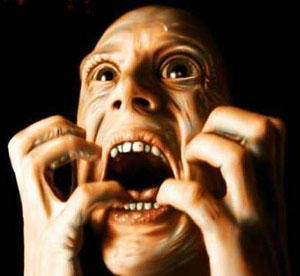
Definition
"Fear is defined as vice expectation". Aristotel.
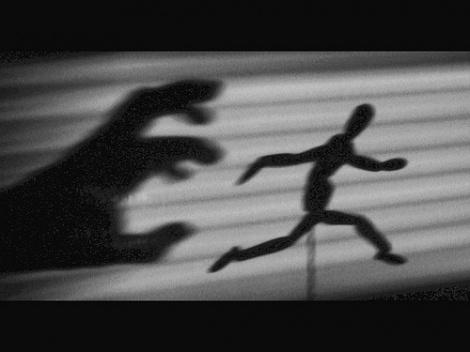
Here Aristotel describes fear as emotion developed in response to threat, especially underlining its defense function. It's true also from evolutional viewpoint considering fear as defensive reaction, anticipating threat, which has been formed and fixed in the process of natural selection.
In full sense, fear is in emotional state evoked by real or imagined danger and usually characterized by unpleasant subjective person's feelings along with physiological and behaviourial reactions. From this viewpoint, biochemical process in organizm are universal and emotional response - individual.
Also fear may be described by different terms depending of extent of manifestation - alertness, fear, horror, panic, phobia. In this post I'll use the term "fear" as middle between its polar manifistations. Just this "middle" state of fear really fulfils defenise function, affording us better and quicker cope with existing situation while exxcessive panic may question the adequasy of action and chances for survival. Phobia in general sense means an excessive fear of some object or situation, not carrying real danger. These extreme manifistations have a lot of specific traits and are not directly related to bodysuspension, so I consider them.
Physiological fear manifestations
I'll repeat that physiological fear manifestations are typical for all people and differ in expressiveness, depending on danger extent.
As fear is the most ancient emotion exeeding organizm chances for survival, brain structures responsible for it, are located in old, central parts of cerebrum - so called limbical system, including hyppocamp, tonsils, pear-shaped zone and several more brain structures. Intially, it was considered that there is one center in nervous system, activation of which evoke fear and reaction of avoidance of frigtening object. Later Americn researcher H. Delio proved that these is two different structures.
Natural reaction for threat will be escape or agressive defense - depending on situation and one's forces assesment. This reaction is usually called "fight or flight". This biochemical reaction of evolutionary development has decisive meaning for survival and is accompanied by a whole range of physiological changes.
Most of this reactions are known to each of us, some are not so obvious or are not associated with fear at all. The most wide-spread fear sympthoms are frequent palpitation, frequent breath, eye-apple expansion, tension, weakness or tremor in muscles, exceed sweating and dryness in the mouth. These and other reactions are produced by work of the nervous system and adrenals. From time to time I observe such reaction to bodysuspension as fainting, and wnich is surprising, it occurs not at the moment of the most acute pain, but when the person is frightened most of all ( for example, till hooks placing or already afterwards). It's explained by blood reflux from cerebrum cork, which at animals, for example, plays the adjusting role defending them from predators ("to pretend dead"). In more general sense, blood reflux to muscles explains skin paleness during fright.
Also it was discovered increasing of blood tension and glycose level in blood, increase of blood coagulation, preventing from large blood loss.
All these changes give undoubtful advantage before danger and are launched mostly by adrenel hormones which have been discovered not so long ago and with big difficulty. These are adreneline and noradrenaline.
Adrenaline is the most important hormone realizing the reaction of "fight or flight" type. It's considered that its secreation is increased at stress conditions, felling danger, traumas. In difference fron adrenaline, the main effect of noradrenaline is exclusively in vessels contraction and exceeding of arterial tension.
Age
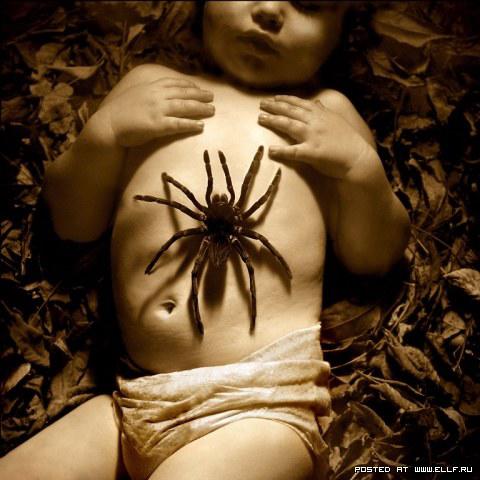
The human feels danger even "in fetus". It's not a secret that at abortion the fetus "saves" from doctor's instrumens, i.e. fear is felt on behaviourial level. Per other data, first fear appear at babies around 7 months. Little children usually are afraid of loud sounds and light flaches, solitude, height, etc.
Except these natural fears, the society grandually begins to inffluence and family in first turn.
Don't touch - You'll break. Don't do - You can't/ Don't go - You'll fall. In such way the child begin to learn that the world is dangerous and he is little and weak in it.
So, by way of getting knowledge of the world and further socialization, the child learns to be afraid of many things - as external objects, as something hot or sharp, of animals or people connected with something unpleasant ( for example, wicked dogs and dentists) and social, as bad marks at school, fear of public speeches and other connected directly with social environment and individuality of the subject in it.
An interesting fact is that some researches tell that in big families middle children have less fears than their brothers and sisters.
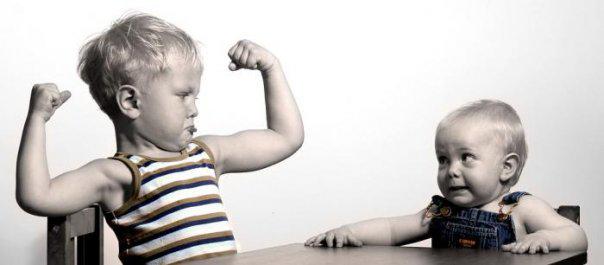
Gestures
It's well known that people tend to communicate not only with help of speech, but also non-verbally, with help of intonation, face expression and gestures. Per different source, not less than 50% of information is transferred just non-verbally. There are many theories of basic emotions and in the majority of them fear is present accompanied by appropriate gestures and poses. I'll exact, that Charles Darwin paid attention to connection of emotions and instinctive behaviour. It was discovered that the germ and gestures is inherent even to child blind from childhood and having no chance to learn through imitation, but it was much poorer. These basic emotions manifestations are native and inherent not only to human, but to supreme animals - primates, dogs, etc.
Under face expression I understand the movements of facial musles, unique way of emotions manifestation not depending on racial or national belonging. Each of us intuitively will learn the frightened person per the folowwing signs: eye-apple expand, eyes are open maximally wide to notice the danger in time. The lips are compressed and spread horizontally, mouth corners are streach back, sometimes teeth may be demonstraded subconsciously, eyebrows are rised and put together - depending from fear extent, it may be expressed more or less clearly. At strong fright , for examle, is situation threatening to life or health, we can observe splutter, terse speach, difficulty in thoughts expressing, the motions may become limited because of muscles tension.
If the fear is caused by pain expectance or punishment expectance, the natural reaction will be the desire to run away,so it may be often observed the unconsious stepping back and increase of distance between threat and himself. If the flight is not possible, depending of own forces assessment, attack or downward movement with subsequent body twistinf in compact poseto hide the face and stomack will follow.
In case of less serious threat or when the person tries to conceal the fear, the typical pose will be hand crossing on the cheast. Hiding for any partition is the natural reaction and in simple the crossed hands are a type of barrier and show the desire to hide from the situation. Sometimes this gesture is replaced by partial barrier when one hand is placed across the body. The similar gestures when the legs crossing same way.

All these signs may be expressed in different extent, be interchanged or manifested partly depending on many factors. They include environment circumstances: type and extent of threat, social aspect (other people presence or solitude), and also the individual traits: temperament, accustomed types of reaction, preliminary experience, personal attitude to situation and will.
Fear classification
There may be a lot of fear classifications depending on measured factor. For example, per intensiveness - alertness -phobia, per objectiveness - real - imagened, per reaction type - agressi flight. But the most general classification was proposed by professor U.V. Sherbatih.
He divides all fears for three groups:
-biological
-social
-existential
At first sight, such theory may have minuses in insufficient detalization, but these basic groups open the very core of the phenomena, without distraction for intensiveness or external manifistations. Using this structure, we may trace the roots of each fear, which may be present mainly in any group, or at their crossing, or be in conflict at all. Let's consider each of them in detail and try to find where the fears are located at bodysuspension.
Biological. To the first group the fears are related, directly connected with a threat for life and health of the human. This is sumultaneously the most ancient and the simplest group for consideration. Only fears directly or indirectly threatening life and health relate to it - its the fear of injuries, fear of pain and of any other dangerous for body integruty and health irritator.
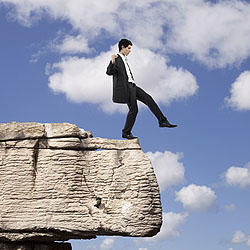
Social. The second group is the later layer and includes frights and anxienties for change of own social status. The replacement of biological fears for social occurs rather gradually, but unalterably. The baby afraid of loud sounds, darkness and solitude, a little older and having been at hospital, he starts to be afraid of injection and doctors. Along with entry into school, fears of teachers arrise, of lessons not learned, and of late coming. As the bees and fire "bites" rarer than the teacher the last ones are feared more. Social fears may ensue from biological, but always have special social component, coming into first place.
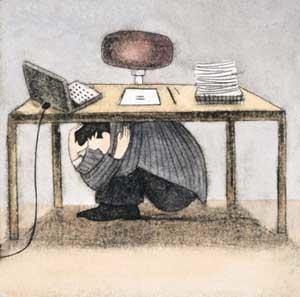
Existential. Third group is the most interesting to me personally. These fears are not connected with any concrete events and have the range of specific features: are inherent to all people, hidden in the depth of subconscious and not always accesible for conscience, and due to their depth and unclarity are not subject for full removal.
This group can be devided for 4 subgroups:
1. Fear before time (future, death)
2. Fear before space (closed / open space, darkness)
3. Fear before life ( unclear life, mysterious, life fatuity)
4. Fear before yourself ( loosing control, madness)
I'll emphasite especially the fear of death, because it's an interesting theme for each person.
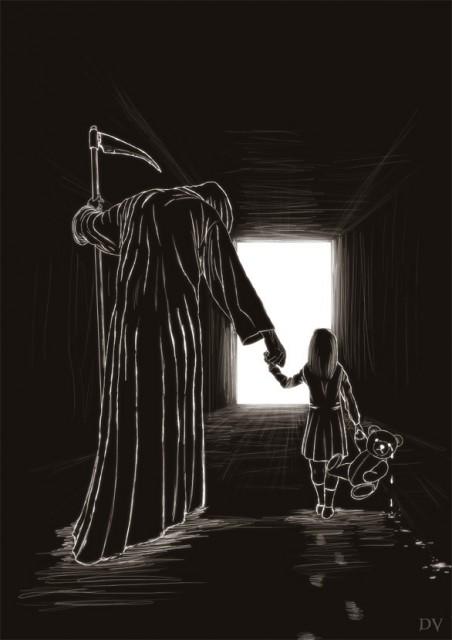
I.I. Mechnikov in his work "Biology and medicine" stated that fear of death is one of the main features distinguishing a man from animals. "All animals instinctively avoid death, but don't cognize it. The child avoiding death by the same way also doesn't have any image of death invetability. The cognition of it is acquired only later, due to outstanding intellectual development of a man, and the cognition of your end inevitability doesn't afford to many people to enjoy life completely". He sought the solution of the problem in science which could, from the one side, to prolong the life duration of a man, and from other, - to help him to realize the natural course and the legitimacy of dying, than this process steps to cause fear and despair. In the end of his life he created the ortobioze doctrine - such person's life when for the place of activeness comes quite senility, death fear dissapears giving place to life satiation and desire of death. However, in reality oldness person aspires to quite life voluntary, and death fear remaines actual for many people of very different age.
On the base of considered material, it's logical to presumethat fears arising at bodysuspension may concern all three groups, but I think, most frequently these fears appear at the edge of first two groups, not touching or not admitting into conscience of the third group. The natural reaction will be expectance, anticipation and fear of pain, without which bodysuspension can't be imagined. But due to dominating social motives, this fear easily is won by all my clients. Also suspension in each case takes place is social environment, i.e. in presense of other people ( masters, photographers, friends ). In this case social fear are swithed ( How shall I cope? What will they they think of me? ). These fears are as obvious, as biological, and partly help to overcome them. The suspended knows that people from his current surrounding ( for example, masters ) have already passed through such experience and are an example of endurance and also an evidence that "nothing terrible" will happen to them, This is a very interesting and delicate topic, to which a special artical will be dedicated.
Psychological fear aspects
Fear is always signal and warning of danger, but it also contains the impulse for overcoming of this danger. We are not used to consider fear as positive function, but namely it makes us forward-looking and careful in view of the danger, quick and smart at the moment of threat. However, per results of K.E. Izard research (1971), who made interrogations of many countries' people, fear is the emotion, mostly unwanted for people to survive. Fear experience itself already frightens a man (phobophobia).
Fear is individual and expresses personal traits of each individuum.
Flegmatic hardly is able to be frightened easily and quckly, but, it taken by fear, will recover not soon. Choleric may be boggled for less than a second, which will not prevent him from feeling calm and sure in two-three monutes.
Emotional reaction for fear is highly personalized. Some people percieve fear as negative emotion and try to avoid it by all means. Other people may become " adrenaline junkies" which is confirmed by flourishing of different directions in extreme bisure. And althrough being a physical reaction, fear may be percieved as positive or negative emotion.
Fearlessness
Sometimes courage grows from fear (George Gordon Byron).
Fearlessness in its day-to-day meaning is the absence of fear, its full contrast. And like fear, it can be considered from two poles - physiology and psychology. According to tradition, I'll start with the first.
Physiology. It would be a beutiful utopia if one fair day the scientists have inveted a "pill from fear". But to work in this direction we should know not only from where fear takes place, but where the courage is hidden. And some results have been achieved.
as I wrote in the chapter " Physiology of fear", lymbical system is responsible in our brain for fear, including tonsils. So/ it was discovered that the patients who had lost the tondil part due to Urbah-Vite disease, have shown full absence of fear - such person doesn't see anything threatening in sources of mortal danger.
Here is an interesting example of such researches:
The researches from Iova University met a patient, called SM, 20 years ago. At first, on her example, the biologists tried to study the features of Urbah-Vite disease, the result of which was the full absence of of amygdala.
Some emotional abnormality of the woman was discovered by scientists when her ability to distinguish fear at other people faces was tested. It turned that this woman couldn't do it.
Brain scanning of SM showed the full absence of amygdala at her.
During three month SM wrote electronic diary and 50 times a day she signed what she felt. The inqury showed that she experinced a lot of emotions ( surprise, joy, disgustion, etc.) but never - fear. At that she remembers that in childhood she still was afraid of somethingnand understand that the fearful video can frighten others.
The scientists came to a conclusion that the key factor in forming of all human fears is namely the amygdala and its loss deprives of fear. To tell the truth, such statement contradicts to works of other biologists.
Unfortunately for the researches, full absence is met very seldom. And so the authors of the current work have no objections to the colleagues, thinking that to rely on information recieved from one patient is not correct. The article of the authors of the research is published in the magazine Current Biology.
The national neirophysiologist V.M.Smirnov also confirmed the role of amygdala in emotions arisal, and foreign researchers note that at amygdala irritation the hallucinations, fear, alertness, and visceral feelings in the stomach are registered, and it's interesting that these effects depended not a lot of from electrodes localization, but more from personal traits of the patient.
Psychology. It's clear that nobody of us is suffering such a disiese and even for scientists is rather difficult to study such people. But the stories about courageous heroes have been exciting the minds and hearts of people for many years. So, what is courage?
Full fear absence at healthy man is impossible and senseless. "Fear existence acknowledge will not be a cause for disappointment or depression. As we experience such fear, we also have a potential possibility to feel fearlessness. True fearlessness is not fear removal, it's the exit beyond fear's limits. We understand "fearlessness" as not the state of "less fear", but the state "above fear" (Chogyam Trungpa Rinpoche - buddhist meditation master).
And actually we'll not call "fearless" the person "asking for trouble", not realizing the danger. A trully fearless person is who realizes all the danger, but not loosing self-posession and self-control, and acting most productively.
Platon thought that we can call viril " a man in such extent in which his ardent spirit in grief and in pleasure observes mind's orders in respect to what's dangerous and what's not". According to Platon, cowardly or courageous people have totally different opinions about which things are dangerous and which are not, and to become fearless you should change the opinion about such things. Platon thought that the estate striving for gain and profit lives in fear. Possession namely, per Platon, gives birth to fear.
According to christianity, fear is the consequence of human depravity. In Old Testament two aspects of fear are traced: from the one side, fear as the result of divine commandment violation raises guilt, from the other - God fear is the main feature of relation to Creator and expressed in awe before the mysteries of the divine being.
Beginning since 1894, i.e. from the moment of psychoanalize birth, the fear issue remained and remaines in the focus of practicizing analysts, who haven't yet come to unique and final decision of this issue. But they developed a lot of methodics of fear overcoming.
Summarizing the stated above, it can be told that being suspended we train in ourselves courage as function of control for instinctive fear reactions. For each of us it's clear that in life we'll inevitably experience pain and fear, and not once. As we learnt from the injuiries reports, these are the emotions which people don't want to experience not depending on sex, age and nationality. But how to prepare for this situations? How to test oneself? Our method is cheking yourself for firmness.
Here I want to cite some philosophers and well-known persons statements:
If you want to the fear - do what you are afraid of. Garun Agatzarsky.
There is nothing to be feared of, but fear. Franklin Ruzvelt.
In courage two main traits are: despise to death and despise to pain. Ciceron.
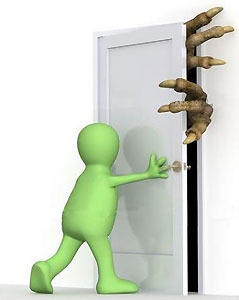
To work on yourself is always useful. Let it be our method. I wish success to all of us ;)


